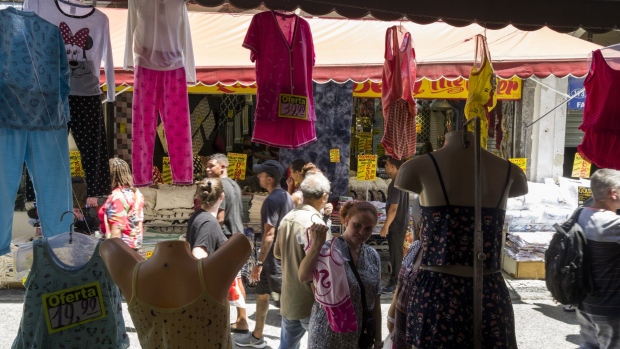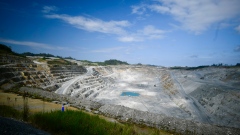May 10, 2024
Brazil Prices Rise More Than Forecast After Split Rate Decision
, Bloomberg News

(Bloomberg) -- Brazil’s annual inflation cooled slightly less than expected as investors deliberate the central bank’s next move after policymakers slowed the pace of interest rate cuts on price pressure concerns.
Official data released Friday showed prices increased 3.69% in April from a year earlier, just above the 3.66% median estimate from analysts in a Bloomberg survey. Monthly inflation came in at 0.38%.
Policymakers on Wednesday cut the benchmark rate by a quarter point to 10.5% in a split decision that left investors wondering about their subsequent moves. The prospects of the Federal Reserve holding borrowing costs higher for longer, as well as increased spending by the government of President Luiz Inacio Lula da Silva, have made forecasting further easing all the more difficult.
Read more: Brazil Slows Pace of Rate Cuts as Board Clashes in Split Vote
April’s inflation was driven by a 1.16% monthly advance in the cost of healthcare products and a 0.7% gain in food and beverages. Meanwhile, household goods fell 0.26%, the statistics agency said.
What Bloomberg Economics Says
“Brazil’s CPI report for April showed another slowdown in headline year-over-year inflation and signs of further improvement in underlying measures. The annualized core converged to the target for the first time since the pandemic. This should embolden the doves at the central bank, while the hawks will likely stay focused on risks to the price outlook.”
— Adriana Dupita, Brazil and Argentina economist
— Click here for full report
Bank Divisions
Divisions are becoming apparent within the central bank. Hawkish board members are reluctant to lower borrowing costs too fast as they attempt to bring inflation down to their 3% target, while Lula’s appointees favor deeper cuts that would bolster growth.
Read more: Under Lula, Doves Are Rapidly Gaining Power in the Central Bank
Policymakers have expressed particular concern over a tight labor market and stubborn services inflation, which has been fueled by strong demand since the end of Covid-era restrictions. However, they did not provide any guidance at this week’s rate decision on what their plans are for next month’s meeting.
Some economists interpreted a slowdown in measures of underlying inflation, which exclude volatile items like fuel and food, as sign that the central bank would continue at its current pace.
“We think this inflation release is tipping the balance toward another 25bp cut, rather than a pause to the easing cycle,” William Jackson, Chief Emerging Markets Economist at Capital Economics, wrote in a research note.
So far, the central bank has lowered the Selic by 3.25 percentage points since it began its easing campaign last August.
--With assistance from Giovanna Serafim and Robert Jameson.
(Updates with inflation details, context and analysis beginning in fourth paragraph.)
©2024 Bloomberg L.P.








